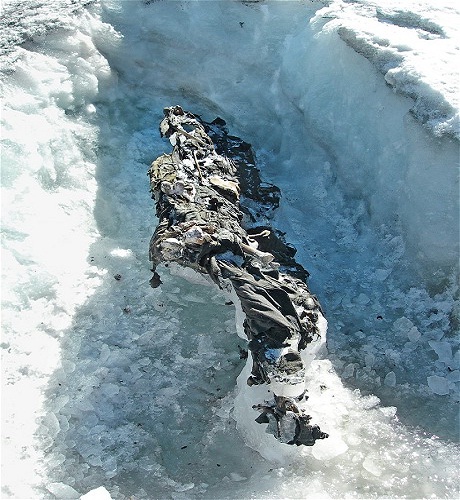
Glaciers of the Italian Alps slowly melt down uncovering what lies underneath – horrors of WWI’s White War…remains of soldiers who fought in that battle preserved for almost 100 years.
Welcome to Pieo
Pieo to a tourist is just a quaint ski resort in the Italian alps so much like the other ski resorts scattered over northern Italy. It is quite popular among middle-class Italians and Russian tourists in winter while in summer, it boasts of a good hiking trail along Stelvio National Park. Its amenities include a spa, shops that sell various grappa by a dozen and even, maybe, aims to become the next top ski destination like Cortina. The resort even opened up cable car service three years ago and a multi-storey car park is currently under construction.
But what makes Pieo different from any other ski destinations in Northern Italy is its nearness to the region’s past, particularly to the role it played in WWI. Take a stroll through the village and you will find a museum dedicated to WWI and not far from it is the 15th-century San Rocco church with its Austro-Hungarian cemetery with a signage that says “massimo rispetto (maximum respect)”. It was here that a crowd of 500 gathered last September for the funeral of two WWI soldiers who died in action on May 1918.
Pieo has retained that WWI feel, thanks largely in part to the freezing and conserving properties of ice.
The White War
When WWI raged, Pieo was the highest village within the Austro-Hungarian empire and was a firsthand witness to the unfolding of a dramatic episode of WWI which is the White War.
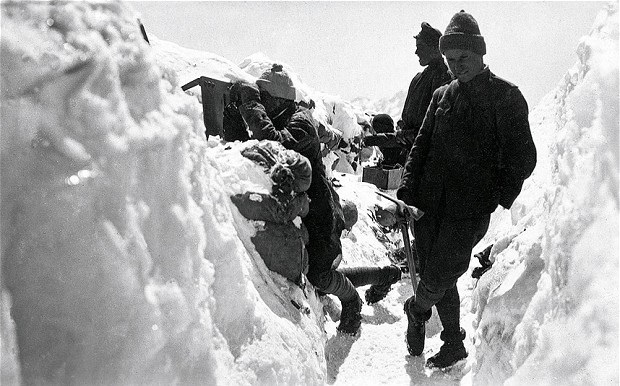
Both Trentino, Pieo’s province, and the adjacent south Tyrol were part of Hapsburg’s territory. Italy, which was recently unified that time and anxious to permanently settle her boundaries, had looked upon these parts along with Trieste as unclaimed lands and in her quest to reclaim them joined the Allies on May 1915. Skirmishes was already boiling over the eastern and western fronts and with Italy’s move, a third battle front had been opened up. Its expanse stretched some 250 miles – from the Julian Alps which is now shared by Italy and Slovenia up to the west, to Ortler massif near the Swiss border.
Because of the front’s eminence, which climbed up as high as 6,000 feet, a different kind of warfare had to be devised – one that dealt with the alps’ high altitude. The Italians already had an existing special mountain troops, the Alpini with their well-known feathered caps; so, the Austrians put up an equivalent mountain unit, the Kaiserschützen. Weaponry and engineers supported the two differing mountain units. The latter were responsible for making trenches that fitted the altitude as well as other war infrastructures including basic cable-ways for the easy transportation of soldiers and munitions to the peaks.
The Armistice put an end to WWI.
Decades after that era, the world warmed up and the glaciers started to ebb revealing debris left by WWI’s White War.
The relics of the said war, which as early as the 1990s slid down from the snowy mountains, were amazingly well-preserved — a love letter addressed to certain Maria but was never sent…a ballad to honor a louse termed in the said literature piece as “friend of my long days” and written on one of the pages of an Austrian soldier’s diary…
There were also corpses of WWI soldiers, frequently in mummified state. The two soldiers recently “washed out” from the glaciers were blond and blue-eyed Austrians, their ages placed at 17 and 18. They reportedly died in the Presena glacier and were buried by their White War buddies in a crevasse, top-to-toe. Both soldiers had bullet holes directly in their skulls; one even had a spoon inside his puttees which was a common practice among WWI soldiers as they had to move from trench to trench eating from communal pots.
“They feel contemporary. They come out of the ice just as they went in. my first thoughts go to their mothers,” Franco Nicolis of the Archaeological Heritage Office in the provincial capital, Trento, commented when he saw them.
Indeed, there was a great possibility the two soldiers’ mothers never knew what happened to their son as the White War raged on.
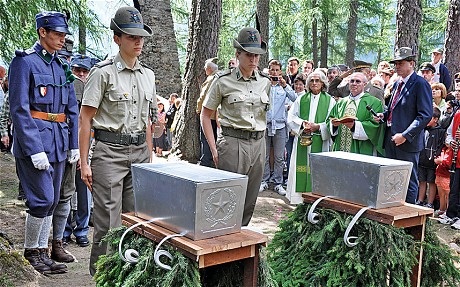
One unusual factor the White War had was both the Kaiserschützen and the Alpini recruited local men who knew the mountains like the back of their hands. This meant, most, if not all, of them knew each other, too. There were even circumstances when family loyalties were divided.
“There are many stories of people hearing the voice of a brother or a cousin in the thick of battle,” said Nicolis.
Nevertheless, the greatest enemy of the men fighting for the two opposing sides were not each other but the weather. In altitudes as high as these alps, temperatures could go down as low as -30-degree Celsius. Thousands of lives were claimed by avalanche which they termed as the “white death”.
In the middle of the conflict were the people of Pieo; they never evacuated from their village as per order of the emperor.
“The Emperor decreed that this village should not be evacuated.As the highest village in the empire, it was symbolic — a message to the rest,” Angelo Dalpez, the mayor of Pieo, said.
So, they became porters and food suppliers; they took care of the wounded and buried the dead. They also saw how their ancestral landscape changed and was remodeled after the war as one mountain summit, that of San Mateo, lowered by 20 feet due to the shelling during WWI’s White War.
The Treaty of Saint-Germain-en-Laye in 1919 gave Trentino to Italy.
“There was never any clash. No revolution. It was an entirely smooth transition,” Nicolis commented.
People living within the mountain region always had been autonomous and the Italian government’s arrangement had given them a degree of autonomy so there was nothing to complain about the change of governments.
Residents living within the borders of Trenito went on with their lives drinking grappa, eating knödel and using the Italian language as their main language as it was one of the empire’s 12 official languages.
What they never forgot was their WWI history – the battle called White War.
Relics in the Snow
Many of the residents’ relatives had fought on the Hapsburg’s side; so when melting ice started to bring in remains of WWI soldiers from the mountains, they were looked upon as grandfathers or great-grandfathers.
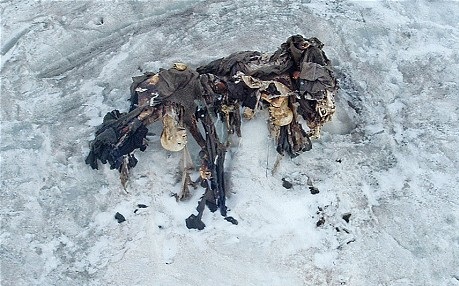
2004 – Maurizio Vicenzi, the director of Pieo’s war museum and a local mountain guide whose family had been one of those who fought for the Austrians during the White War, came upon three mummified WWI Hapsburg soldiers who were hanging down from an ice wall in San Matteo which had a height of 12,000 feet, scene of some of history’s highest battles. The three mummies were without weapons and had bandages in their pockets which suggested they had been stretch-bearers during the last struggle for the mountain which happened on September 3, 1918. When a pathologist received permission to examine one of the cadavers to gain a deeper understanding on the bodies’ mummification, the local people rose up to object as they felt it would defile the dead.
The three corpses were laid at the San Rocco cemetery along with the two recent finds from Presena glacier. All five went through the laboratory of forensic anthropologist Daniel Gaudio along with his team at Vicenza. His task is to identify the names of the dead WWI soldiers.
Explorations
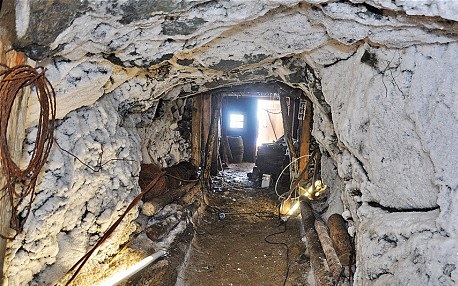
2005 – Vicenzi started to explore the Punta Linke site which is about 6,500 feet above Pieo. He discovered a natural cave hidden in the ice with a lot of war materials strewn about on its surface – ammunition boxes, straw overshoes and even steel helmets. So, he gathered a team, all WWI enthusiasts, and started exploring the insides of the said cave.
Nicolis’ team came two years later and the two groups then dug up a wooden cabin, one of the cable-ways’ station which had played a vital role in bringing the supplies in for the troops.
The said cabin had been built against Punta Linke’s rocky peak and behind it runs a tunnel which stretches up to 100 feet through the tunnel. The latter, which is the height of a man, had been covered with ice they had to employ the help of hug fans to clear it up.
In the event of the White War, the supply-laden wooden crates delivered to the cable-way had to go through the tunnel before being sent to the last leg of its journey which was an amazing 4000-feet leap across the via an unsupported cable-way to the front line. The tunnel’s exit had a window beside it for the watcher to make sure the crates reached their destinations successfully.
Inside the cabin, the two archaeological teams found a Munich-made Sendling machine which the leaving Austrian troops had dismantled but is now restored. They also found three documents pinned on a wall which they just left in place: a handwritten instruction on how to use the engine, a page from the Wiener Bilder, an illustrated newspaper, which showed Viennese people in line to buy food which was in short supply by 1916 within the disintegrating Hapsburg empire and the last was a postcard with a picture of a peacefully sleeping woman and signed in Czech, “Your abandoned lover”, for a certain Georg Kristof, a surgeon in the engineering corps, from his wife in Bohemia.
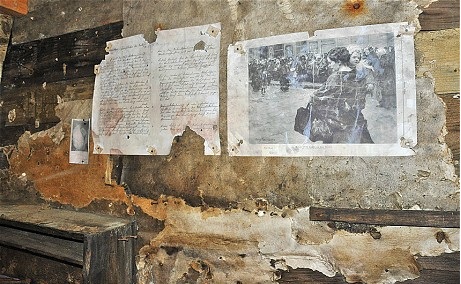
Nicolis, along with an associate, Nicola Cappellozza, kept the love letter to Maria in their laboratory in Trento. It was found in a box of letters ready for posting in Punta Cadini (11,500 feet) and bore a later date of 1918. The archaeological teams do not want to disclose the contents of the said letter until they find Maria’s family.
“Perhaps hostilities ended before they could be sent,” Nicolis commented about it.
Other White War relics they found within the vicinity included newspaper fragments with Cyrillic prints. Russian tourists visiting Pieo today may not know it but fact is, Russians had been there before them – eastern front prisoners who were employed as pack mules or as straw overshoes weavers which the Austrians used to protect their feet from frostbite.
Remembering the White War
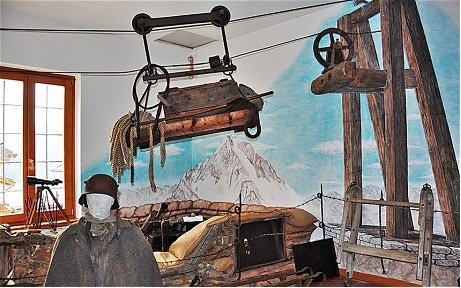
The war museum in Pieo acts as the picture filler about the White War scene. Its glass boxes display crude surgical instruments, the kind which Kristof might have used; rosaries, porcelain pipes which look like tiny saxophones and bedecked with Tyrolian fashion as well as “trench art” chiseled out of shells and shell casing fragments.
When a hungry period followed the Armistice, the locals meandered throughout the mountains looking for relics and salvaged them to reuse and sell. There are some pieces they kept as war souvenirs and they donated these to the museum when it first opened ten years ago.
“They consider the museum their collective property. They’re proud of it,” Dalpez said.
Over 80 soldiers who died in the White War came to light the past decades following it and it is a certainty that more will come. However, there is one body which continues to shun rescuers – the remains of Arnaldo Berni, the 24-year-old captain who acted as the leader of the Italians in their conquest for San Matteo August 13, 1918.
Searching for Berni
Arnaldo Berni’s story is the perfect example of war’s tragedy; as what The White War, the 2008 book authored by British historian Mark Thompson, explained – strenuous feats done at the height of war only managed to to produce superficial territorial gains and none of it was known by those below.
After his war efforts met success, Berni complained to relations about the press coverage in a letter that managed to pass through censorship.
“There is a short and confused description of our battle, which was in fact brilliant and incurred very little loss of life… The journalists don’t come to us at such high altitudes, so the prodigious efforts of our men are not known,” he wrote.
He died three weeks later when the Austrians dropped a shell in the crevasse he was sheltering in, an offensive attack part of their plan to recapture San Matteo. Two months after Berni’s death, the Italians let out a shattering blow against their enemy at Vittorio Veneto located on the Venetian plain which ended the war.
Attempts at finding Berni’s remains were done over the years; the first ones were by his men then by his devoted half-sisterMargherita, the skinny girl who Berni fondly called Ossicino or Little Bone, who made annual pilgrimages in the mountains for many years and finally by Cappellozza, Vicenzi and the others.
In 2009, they even went to the crevasse where Berni most certainly met his death though no traces of him could be found there. However, Capellozza had not forgotten the experience.
“We were able to walk horizontally a long way. I remember the colours in the ice — the blues, the violets,” Cappellozza recounted.
Walking Down History
Summer last year, Nicolis’ team finished up the restoration they were doing on the Punta Linke way-station. Summer this year, hikers will be able to walk into the simple WWI memorial and as Nicolis puts it, visitors will be able to “smell the war”.
He does. While in Punta Linke, he looks through its window and tries to look at the mountains the way those WWI soldiers did. Those who came from the empire’s distant corners, like the surgeon Kristof, must have marveled by the war which ensued for the inhospitable snowy wilderness. For the local highlanders, it could be that the mountains held the prize while the Emperor was the remote being they had to fight for and because of that, they had to contend with men they had known and climbed the mountains with all their lives.
In either cases, Nicolis believes the mountains symbolized death before they conveyed beauty.
“Snow is truly a sign of mourning,” Giuseppe Ungaretti, the Italian war poet, wrote in 1917.
But the mayor of Pieo sees things in a different light. At the Presena pair funeral, he asked that three anthems be played – the Italian, the Austrian and the Ode to Joy.
He then said in his speech:
“The people who fought here were Europeans before their time.”